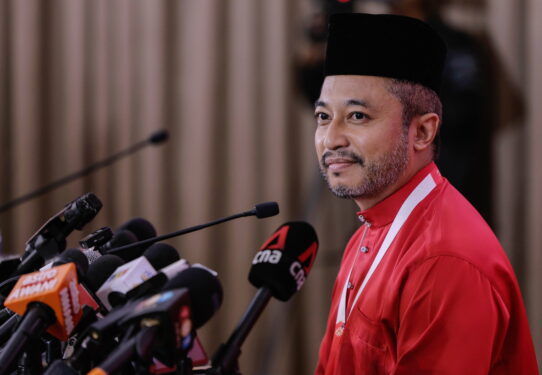SINCE beginning of the month, Afghanistan is under siege. Since the US troops withdrew from the country, which was celebrated by the Taliban and several leaders from the Organisation of Islamic Cooperation (OIC) member countries, many leaders are now puzzled with the ongoing assault on the minorities and sectarian violence taking place there.
Despite the fact that the US retreat was heavily criticised by the international community, there is no doubt, a grand strategy behind it.
And the world will know what that strategy is and why the pullback is so precipitous in the coming years.
The war on terror
The objective of the war on terror is to apprehend and remove perpetrators, particularly the leaders of terrorist organisations. The assassination of Osama Bin Laden in 2011 marked the beginning of the US’ decision to withdraw from Afghanistan.
According to the Costs of War project at Brown University, the US has spent US$8 tril on post-9/11 wars, including in Afghanistan and Iraq, which have killed over 900,000 people.
More than US$2 tril has been spent on the Afghan War, according to that report, which includes interest on loans used to support the war as well as expenses such as veterans’ care. Furthermore, North Atlantic Treaty Organization (NATO) members such as the UK and Germany spent more than US$45 bil on the war.
More than 3,500 coalition members have perished since the battle against the Taliban began in 2001, including more than 2,300 US soldiers and 450 UK troops. In warfare, a total of 20,660 US servicemen have been injured. Since 2009, almost 111,000 civilians have been killed or injured, according to the United Nations Assistance Mission in Afghanistan (UNAMA).
The cost of maintaining momentum in the fight against Taliban, as well as the deaths of US and allied forces, are cited as justifications for the withdrawal. However, it is unclear whether there is a “hidden agenda” that surpasses the US’s obligations to Afghanistan.
Russia and China
With China’s rise challenging the US’ hegemony and Russia’s suspected greater participation in its internal affairs, the US shifted its foreign policy to treat these countries as adversaries.
At the height of the Afghanistan conflict, high-ranking members of the US Government such as Vice President Kamala Harris and US Defense Secretary Lloyd Austin visited South East Asian countries such as Singapore and Vietnam, indicating that this scenario is conceivable.
The presence of US and allied military assets in the Indo-Pacific region has recently increased, as has Joe Biden’s statement on Thursday, confirming that the US will come to Taiwan’s defense and committed to defend the island China claims as its own.
While some scholars questioned the US’ commitment, the increased presence of US and allied troops, as well as China’s People Liberation Army (PLA) encroaching Taiwan air space recently signal that something will happen and it will be inevitable.
Also, Biden stated that people need not be apprehensive about the US military’s strength because China, Russia, and the rest of the world recognise that the US has the world’s most powerful military in history. He also stated that the US does not desire a “cold war” with China and the latter must understand that the US would not back down on Taiwan’s security and sovereignty.
Samuel Huntington’s clash of civilisations theory is used to explain US foreign policy, in which the West, inspired by the US, must prepare to confront its antagonists. They have somewhat “eliminated or weakened” Islamic civilisation, and their attention has switched to the Confucian civilisation, i.e. China.
As for China, it has aligned with Pakistan and Iran, two of Afghanistan’s neighbours. The ongoing border tensions between China and India allows the US to deepen its friendship with India in order to counter China’s growing influence in South Asia.
Turkmenistan and Uzbekistan to the north, and Tajikistan and China to the northeast, are the other nations that border Afghanistan. Unlike the former, the other are close allies of Russia. Kazakhstan and Tajikistan are member the Collective Security Treaty Organization (CSTO), an intergovernmental alliance created in 1992 led by Russia.
CSTO is a military alliance like NATO, according to carnegiemoscow.org, and Article 4 of the CSTO Charter declares that any armed attack threatening the security, stability, territorial integrity, or sovereignty of one of its members shall be considered an act of aggression against all member nations.
The charter also states that members prefer political means to fulfill the group’s objectives, despite the fact that the CSTO still has a combined military force of more than 20,000 troops. The CSTO has never been called into action, but it does conduct military training exercises on a regular basis.
The Brazil, Russia, India, China, and South Africa grouping, or BRICS, and the Shanghai Cooperation Organization (SCO) both have China and Russia as members. BRICS is an economic partnership in which the Russian military and its Chinese counterparts also undertake joint military drills on a regular basis. With such drills, China and Russia can be considered allies.
Conclusion
By leaving Afghanistan, the US inadvertently handed the problem over to its adversaries, Russia and China. Meanwhile, Pakistan, a former close ally that is now a part of China’s grand Belt and Road Initiative, will play a role in this equation.
While many saw the US’ grand strategy in Afghanistan as a failure of its foreign policy, I believe they have another major purpose in mind.
The impact of the tribal system is reflected in the form of Afghanistan’s administration. The Loya Jirga, for example, is Afghanistan’s most influential institution, consisting of tribal elders who can influence the path of any administration in Afghanistan. Because of its distinctiveness, the US has understood that it will not be able to permanently resolve the Afghan crisis.
Furthermore, many nations are directly and indirectly tackling their own security problems, such as China’s with the Eastern Turkistan Islamic Movement (ETIM) terrorists and Pakistan with ISIS-K and Tehrik-i-Taliban Pakistan terrorists.
After 20 years in Afghanistan, the US has realised that the war had to end. It has now not only shifted its focus to the growing challenges from China and Russia, but it also has reason to believe that terrorists and their ideology cannot be completely eradicated.
Moreover, the US no longer has a good reason to stay in Afghanistan because they have recognised how difficult it is to make meaningful structural reforms after spending trillions of dollars and losing a large number of troops there.
By reaching out to the Taliban; Russia, China, and Pakistan are indicating that they want to be a part of the solution to Afghanistan’s crisis, which is unlikely to be resolved unless Afghans stand up and demand change.
The US’ withdrawal from Afghanistan serves a purpose, and as the world’s “grandmasters”, they are now wondering how their adversaries will deal with the challenges thrown at their way. – Oct 24, 2021.
R Paneir Selvam is a senior lecturer at the Faculty of Business, Economic and Accounting/Institute of Crime and Criminology, HELP University.
The views expressed are solely of the author and do not necessarily reflect those of Focus Malaysia.










